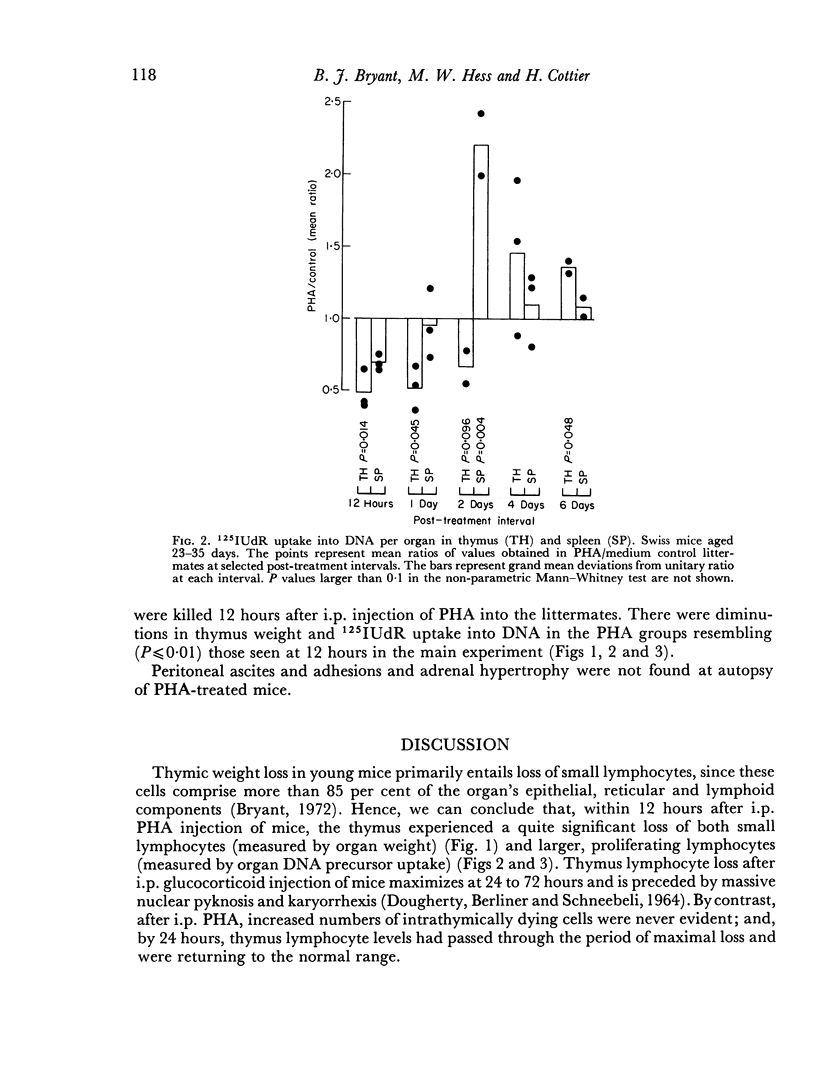Abstract
Juvenile Swiss mice experienced significant diminutions in thymic content of both small, non-proliferating and larger, proliferating lymphocytes within 12 hours after intraperitoneal injection of phytohaemagglutinin. These alterations, which may predate alterations in lymphocyte traffic and morphology elsewhere, were interpreted as being the consequence of a massive thymus lymphocyte emigration, not of in situ cytolysis, and were effaced by intrathymic lymphocyte restoration toward control numbers by 24 hours.
Full text
PDF





Selected References
These references are in PubMed. This may not be the complete list of references from this article.
- Bryant B. J. Renewal and fate in the mammalian thymus: mechanisms and inferences of thymocytokinetics. Eur J Immunol. 1972 Feb;2(1):38–45. doi: 10.1002/eji.1830020109. [DOI] [PubMed] [Google Scholar]
- Cantor H., Asofsky R. Paradoxical effect of anti-thymocyte serum on the thymus. Nature. 1973 May 4;243(5401):39–41. doi: 10.1038/243039a0. [DOI] [PubMed] [Google Scholar]
- Chanana A. D. Variations in the expression of theta-C3H alloantigen on thymic and peripheral lymphocytes of newborn and young adult mice. Cell Immunol. 1974 Aug;13(2):216–229. doi: 10.1016/0008-8749(74)90240-8. [DOI] [PubMed] [Google Scholar]
- Gamble C. N. The effects of phytohemagglutinin on mouse spleen cells in vivo. Blood. 1966 Aug;28(2):175–187. [PubMed] [Google Scholar]
- METCALF D. THE AUTONOMOUS BEHAVIOUR OF NORMAL THYMUS GRAFTS. Aust J Exp Biol Med Sci. 1963 Aug;41:SUPPL437–SUPPL447. doi: 10.1038/icb.1963.64. [DOI] [PubMed] [Google Scholar]
- Raff M. C. T and B lymphocytes and immune responses. Nature. 1973 Mar 2;242(5392):19–23. doi: 10.1038/242019a0. [DOI] [PubMed] [Google Scholar]


